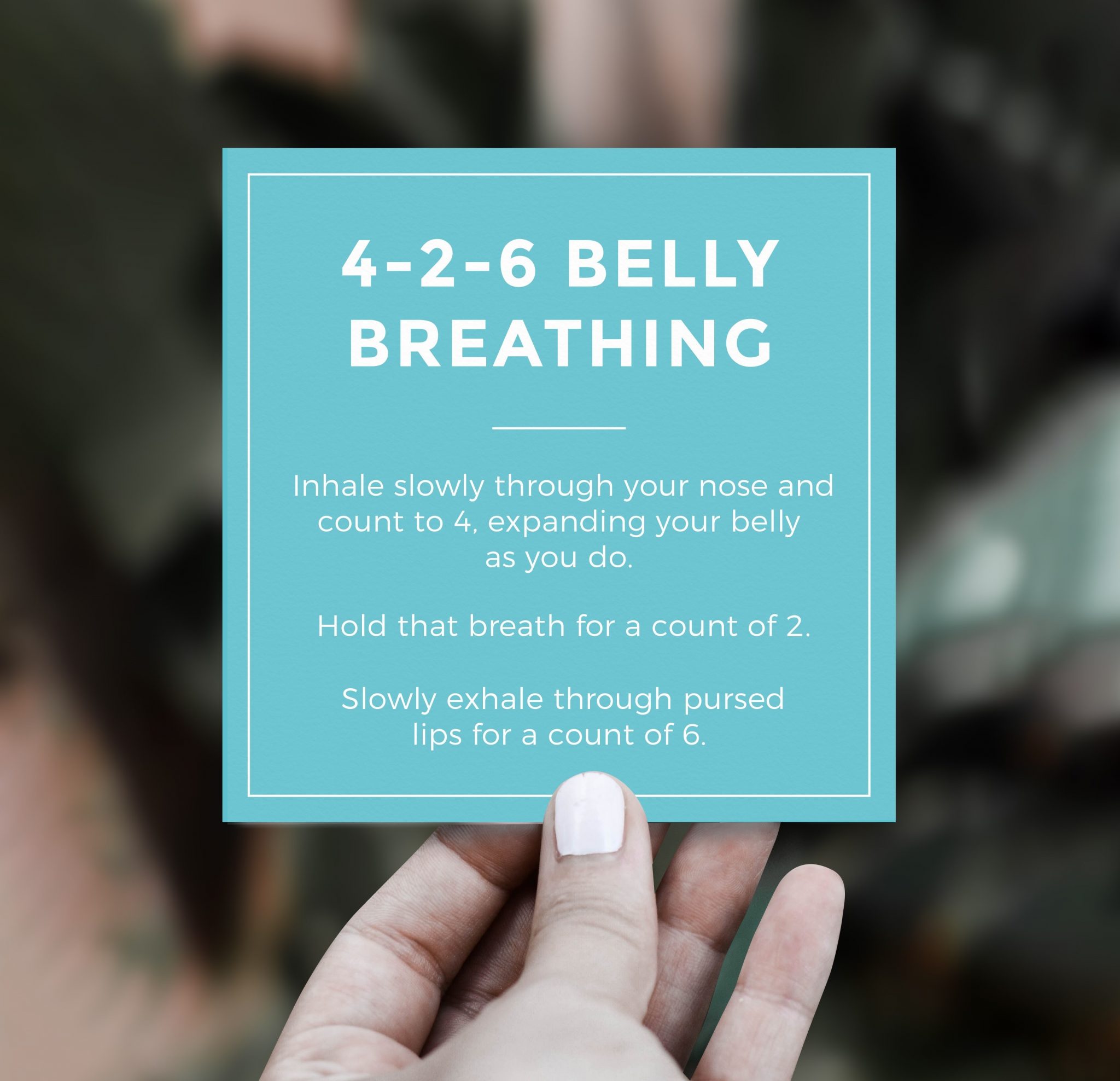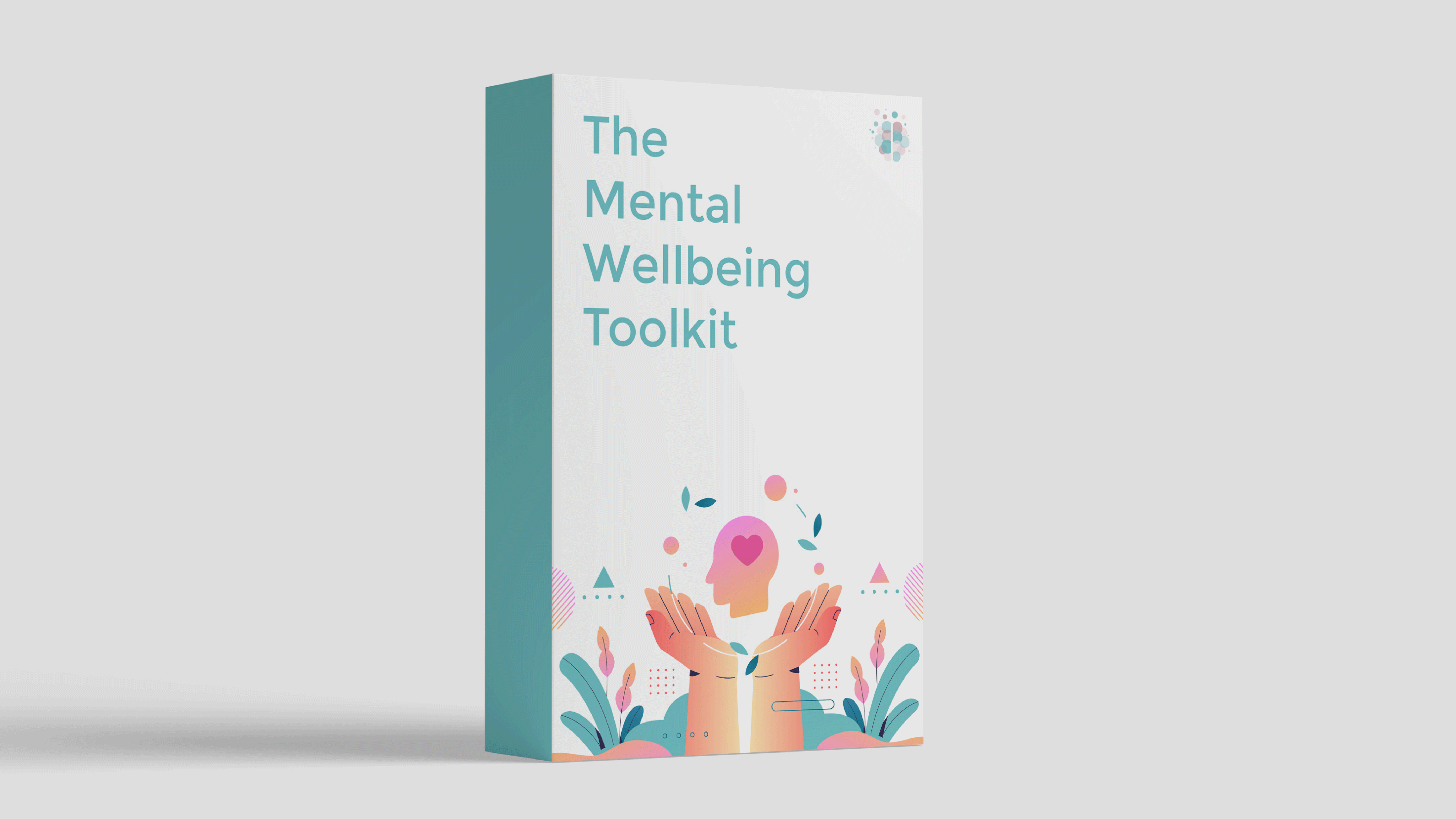- Restlessness
- Irritability
- Dread
- Excessive worry
- Breathing difficulties – the resulting imbalance of CO2 and oxygen can lead to:
- Chest tightness
- Shooting chest pains
- Feeling like you can’t breathe
- Heart pounding and racing
- What feels like an irregular heartbeat
- Sweating or hot flushes
- Feeling dizzy or light-headed
- Weakness
- Feeling sick
- Shaking hands and legs
- Sweaty palms
- Tingling or numbness of the arms, legs, fingers, toes or face
- Blurred vision
- Ringing or pulsating in the ears
- Body tremors
- Digestive issues – stomach cramps, bloating, constipation, diarrhoea, indigestion, heartburn and acid reflux
- Muscle tension in the neck, shoulders and jaw, which can result in physical aches, pains and headaches
Panic attacks are also associated with free-floating anxiety. The cause of these symptoms relates to the chronic activation of the threat stress response. We prefer the term “autostress”, coined by Dr John Arden.
He explains:
"Like autoimmune disorders that hijack the immune system, attacking the body instead of protecting it, autostress [transforms] the stress response system into something that attacks the self rather than protecting it."
That’s why you can experience anxiety symptoms when you don’t currently have anything to feel anxious about.
Autostress lingers from past experiences, which is why people on the C-PTSD spectrum are particularly prone to free-floating anxiety.
The antidote? The relaxation response – the physiological opposite to the stress response.
Threat Stress Response |
Relaxation Response |
|
Brainwaves quicken Breathing quickens Increased blood pressure Heart rate increases Digestion slows down Decreased immune response Cortisol and adrenaline levels increase Libido reduces |
Brainwaves slow down Breathing slows Decreased blood pressure Heart rate decreases Normal digestive functioning Increased immune response Cortisol and adrenaline levels reduce Libido returns to normal state |
To reduce free-floating anxiety, you need to regularly activate the relaxation response. In doing so, you move into slower frequency brain waves.
Activities to Reduce Free-Floating Anxiety
When you practice tuning into your body, you'll notice your heart rate and breathing slowing down, which indicates you've entered the relaxation response.
Here are four kinds of activities to try – it’s all about experimenting and discovering what works best for you.
- Being in nature
- Listening to auditory stimuli
- Meditating
- Breathing exercises
1. Being in Nature
There are plenty of theories about why being in nature is so therapeutic. One has to do with the presence of fractals and their impact on the brain. Fractals are repetitive patterns found in plants, flowers, rivers, mountains, clouds and seashells.

Consider trees. You have large branches growing out of a trunk. Those branches have smaller branches, and so forth. The more you zoom in, the finer and finer the branches get. Interestingly, despite their rich appearance, fractals are visual representations of mathematical algorithms that are extraordinarily simple – they're full of "loops" and “iterations”.
Fractals are easy for your brain to digest. They give your brain a rest! This also explains why mandala colouring is particularly effective for calming anxiety.
Professor Richard Taylor explains:
"Through exposure to nature’s fractal scenery, people’s visual systems have adapted to efficiently process fractals with ease. We found that this adaptation occurs at many stages of the visual system, from the way our eyes move to which regions of the brain get activated. This fluency puts us in a comfort zone and so we enjoy looking at fractals. Crucially, we used EEG to record the brain’s electrical activity and skin conductance techniques to show that this aesthetic experience is accompanied by stress reduction of 60 percent – a surprisingly large effect for a nonmedicinal treatment."

2. Listening to Auditory Stimuli
Studies have found that listening to certain kinds of music can cause a significant increase in calming alpha waves.
Specifically, research tends to focus on classical music - Sonata in D Major for Two Pianos K448 by Mozart is often used – and the power of fractals may explain why.
Harlan Brothers, a composer and mathematician, studies fractals in music. He identified fractals in the music of famous composer Johann Sebastian Bach. In Cello Suite No. 3, patterns of long and short notes reappeared again at larger scales.
Just like fractals in nature are easier for our brain to visually process, fractals in music may be easier for our brain’s auditory systems to digest, allowing our brain waves to slow down.
Another way to induce the relaxation response through auditory methods relates to the autonomous sensory meridian response (ASMR). This refers to a calming, tingling sensation that begins on the scalp and moves down the back of the neck and upper spine.
A recent study found that auditory stimuli are particularly effective at inducing ASMR, and while it's happening, people's alpha wave activity is increased.
The sound of whispering seems particularly conducive to ASMR. Here’s a video with 23 million views if you’re interested in trying this for yourself. There are literally thousands of YouTube videos to explore! Keep in mind that some people appear to be more prone to ASMR than others.
While browsing YouTube, you might come across ASMR cat purring videos (like this one).

The frequency of a cat’s purr is around 25Hz. Interestingly, various researchers have shown that sound frequencies in this range can aid bone growth, heal fractures, relieve pain, and help with breathing problems.
That’s why cats also purr when they’re stressed: it’s their inbuilt self-soothing mechanism.
One study found that cat owners are less likely to die from heart attack, stroke, and other forms of cardiovascular disease.
Finally, when it comes to alpha wave auditory stimuli, many people report feeling relaxed by binaural beats. Binaural beats occur when you hear different frequency sounds in each ear at the same time. The two frequencies are processed by your brain and produce the perception of a third frequency.
A review of 22 studies found that binaural beats in the theta and delta bands can effectively reduce anxiety.
Here’s a 15 minute theta wave YouTube video to try.
Why not explore different sounds – classical music, ASMR, cat purring, binaural beats – and see what helps you feel relaxed? You can then create your own Alpha Waves Playlist.
3. Meditation
The relaxation response was first discovered by Herbert Benson while studying people practicing transcendental meditation (TM). He made the discovery in the same room at Harvard University that the stress response was discovered in!
He outlines a step-by-step process for shifting into the relaxation response through meditation:
- Sit quietly in a comfortable position and close your eyes.
- Relax all your muscles, beginning at your feet and progressing up to your face.
- Breathe through your nose. Become aware of your breathing. As you breathe out, say a word or phrase (e.g., "one"*) silently to yourself. For example, breathe in, and then out, and say "one"*, in and out, and repeat "one."* Breathe easily and naturally.
- Maintain a passive attitude and permit relaxation to occur at its own pace. Don’t worry about whether you’re successful in achieving a deep level of relaxation. When distracting thoughts occur (they will – repeatedly!), gently redirect your attention back to repeating "one."*
- Continue for 10 to 20 minutes. You can open your eyes to check the time, but don’t use an alarm. When you finish, sit quietly for several minutes, at first with your eyes closed and later with your eyes opened. Don’t stand up for a few minutes.
- With practice, the response should come with little effort. Practice the technique once or twice daily, but not within two hours after any meal, since digestive processes seem to interfere with the elicitation of the Relaxation Response.
*You can pick any soothing word, preferably with no meaning or association, to avoid mental stimulation, e.g., relax, alpha, enough, etc.
It’s common for people with free-floating anxiety to feel uncomfortable focusing on their breath and/or bodily sensations. If this is your experience, don’t worry – you can enter the relaxation response by just focusing on the word/phrase.
Benson notes, “Anything that breaks the train of everyday thought will evoke this physiological state." So, it’s all about learning how to switch off from our constant inner chatter.
It’s about giving ourselves permission to stop planning, analysing, and problem-solving.
It’s a skill, and it takes practice. Research shows that the more advanced the meditation practitioner, the more reliably they can shift into slower frequency brain waves.
4. Breathing Exercises
Breathing exercises have also been found to induce alpha brain waves.Breathing problems are actually the root cause of most common physical anxiety symptoms. Did you know you can even be holding your breath without realising it?
When it comes to breathing difficulties, you might experience:
1) Shallow breathing (breathing in too quickly),
2) Over-breathing (breathing in more air as you feel like you’re not getting enough, for example through yawning or sighing frequently).
Some people do both.
Let’s take a moment to test your breathing:
- Put one hand on your chest and one on your belly.
- Breathe for a few seconds. Which hand rises?
- If it’s your chest, you might have developed a habit of shallow breathing.
Whereas chest breathing is linked to physical anxiety, abdominal/diaphragmatic/belly breathing is our natural breathing pattern. Babies do it.
Although the effects of breathing problems can be very unpleasant, you can reverse the habit by practising controlled breathing exercises.
If you’ve been chest breathing for a while, belly breathing might feel a little strange. Don’t worry – over time, it’ll become more natural.
The Mental Wellbeing Toolkit provides instructions and flashcards for various breathing exercises:
- Equal Breathing
- 4-2-6 Breathing
- Alternative Nostril Breathing
- 4-7-8 Belly Breathing
- The Box Breathing Technique
Breaking the Addiction to Doing
Relaxing is hard for lots of people – and being constantly on the go can perpetuate free-floating anxiety. Your body and mind need rest!
In slowing down, we act against cultural norms and societal messaging. The emphasis on productivity and striving is deeply embedded in Western society. It’s even in the World Health Organisation’s definition of mental health:
"Mental health is a state of well-being in which an individual realizes his or her own abilities, can cope with the normal stresses of life, can work productively and is able to make a contribution to his or her community."
Perhaps you had this message amplified by well-intentioned parents. Growing up, did they tend to focus their praise and attention on your achievements? If so, they signalled to you that being productive equates to being loved and worthy.
To feel better, we need to let go of the need to always be productive, untying it from our sense of self-worth.
How Buddhist Teachings Calm the Mind
Life is characterised by “dukkha”, which literally means “a wheel out of kilter”. Dukkha is often translated as suffering or dissatisfaction. But we can think of it more accurately as the feeling that something isn’t quite right.
Our brain is a problem-solving, analytical organ. It will always be able to latch onto perceived “problems” given that life is characterised by dukkha.
Dukkha also permeates our relationships. Research by John Gottman shows that 69% of relationship problems are unsolvable, “perpetual problems”.
What if you could shift away from the “problems and solutions” mindset that keeps your brain in overdrive?
What if you could let go of constantly fixing and doing and striving and lean into accepting and simply being? That’s what Buddhism teaches through mindfulness.
When we truly internalise the reality of life, the concepts of dukkha, impermanence, and non-duality (shifting away from categorical good/bad thinking), we can achieve “satori”, a Buddhist term for awakening/understanding.
In satori, the mind naturally settles.
Parts Noting
In The Thinking Slow Method in The Mental Wellbeing Toolkit, we outline a method called Parts Noting that can help you facilitate a shift to mindful living.
You might have heard of the Noting Technique in meditation. This involves noting what you’re experiencing as a way to help you stay present (e.g, stating “thinking” when you notice thoughts arising, or “hearing” when you notice sounds). Parts Noting is similar – the difference is that the focus is on your behaviour.
This method is inspired by the Internal Family Systems Model (IFS). Family therapist Richard C. Schwartz noticed that many of his clients spoke about “parts of themselves”.
Find out more about Parts Noting and how it can help you break the addiction to doing in The Mental Wellbeing Toolkit.
Of course, it’s a balance.
We’re built to strive and achieve goals. The brain systems behind striving help you take care of your basic needs. But the reality is many of us are in strive-overdrive and it harms our mental health and wellbeing.
Being honest with yourself about whether this affects you can save you regret further down the line.
In her book The Five Top Regrets of the Dying, palliative care nurse Bronnie Ware describes how “I wish I hadn’t worked so hard” is one of the most common things she hears from people on their deathbeds.
What effect does strive-overdrive have on your relationships, health and mental wellbeing?
Is it really worth it? Or will you be like Ware's patients, wishing you'd have made different life decisions when your time is up? Is it time to start doing things differently, seeing yourself and your life in a new way?
The Power of Slowing Down
Regular elicitation of the relaxation response has been shown to result in powerful and enduring biochemical and physiological changes that supercharge your health and reduce anxiety symptoms.
You have the power to change the expression of your genes in a way that makes you more resilient to stress, anxiety and burnout, plus all the associated physical health issues.
Benefits of regular relaxation response practice include:
- Reduction of both mental and physical anxiety symptoms
- Improved immune system
- Improved mood
- Improved sleep
- Increased energy levels
Besides life regrets around overworking, what are the consequences of not slowing down, of remaining in a state of free-floating anxiety?
Well, research indicates that a staggering 80 to 90% of all doctor’s visits are stress-related.
Stress affects your entire body and can contribute to a wide range of physical health issues such as heart disease, chronic pain, and sleep dysfunction.
It can be easy to ignore what’s going on with our bodies, autopiloting our way through life with a focus on our external rather than internal environment. Many people are so fixated on what’s causing their distress, and not on how it’s impacting them. This can lead to rising levels of poor mental wellbeing that can creep up on you in slow and insidious ways.
There’s a saying: “If you listen to your body when it whispers, you won’t have to hear it scream.”
Summary
Research suggests that free-floating anxiety is associated with chronic activation of the threat stress response and high frequency beta brain waves.
To effectively reduce free-floating anxiety, build a daily habit of slowing down your brain waves and shifting into the relaxation response. Try to do this for 10-20 minutes each day.
You might encounter some internal resistance to slowing down. That’s completely understandable – society emphasises the need to be productive and constantly striving.
You might have internalised this message even more if you've learned to equate productivity with being loved and feeling worthy.
How liberating would it be to just allow yourself to be content?
To calm a busy mind, try leaning into accepting things exactly as they are – inherently flawed. Filled with perpetual problems.
For your mental and physical health, start to break your addiction to doing. Living in a state of autostress is harmful for both your mental and physical wellbeing.
Remember: Your work is not your worth. It's healthy to slow down. Your body needs you to slow down.
There are a multitude of other ways to reduce anxiety symptoms. Often, it’s the accumulation of small changes that add up to create substantial improvements we can feel.
Be sure to check out our premium tool for reducing free-floating anxiety, The Mental Wellbeing Toolkit. Feedback we’ve received includes:
"It was like all the knowledge I had accumulated over the last decade was neatly organized and easy to understand all in one place."
Click here to find out more.

About Rebecca
Rebecca is the founder of The Wellness Society and has a background in mental health charity management.She's the author of two books which were previously on Amazon: The Framework and Understanding and Healing Trauma.
She's passionate about creating innovative, concise and compassionate mental wellbeing tools that address the root causes of distress.



